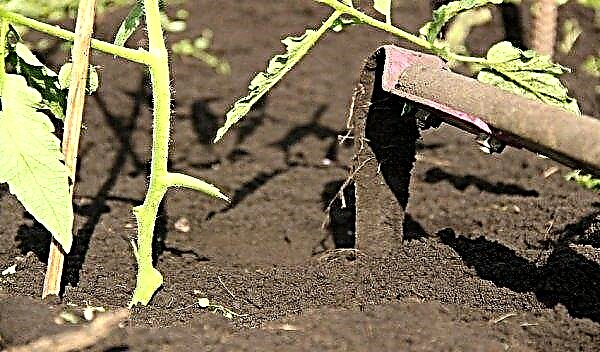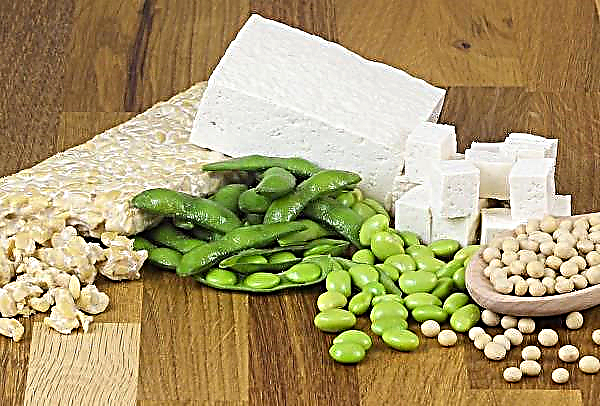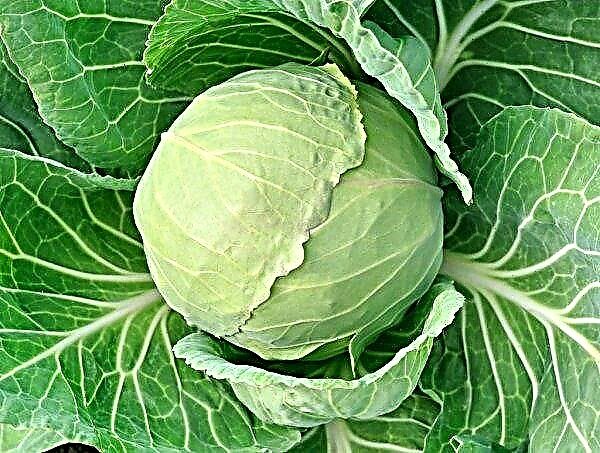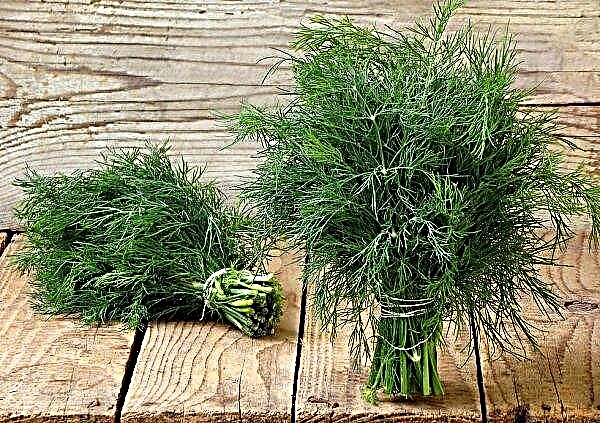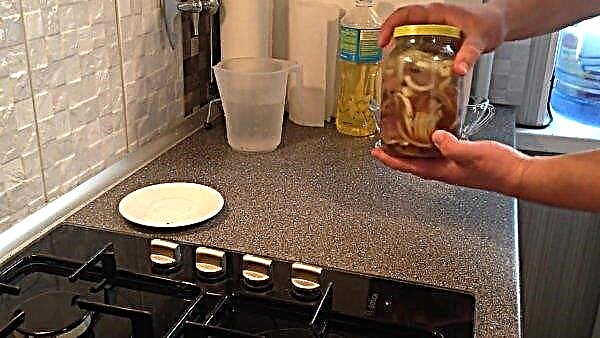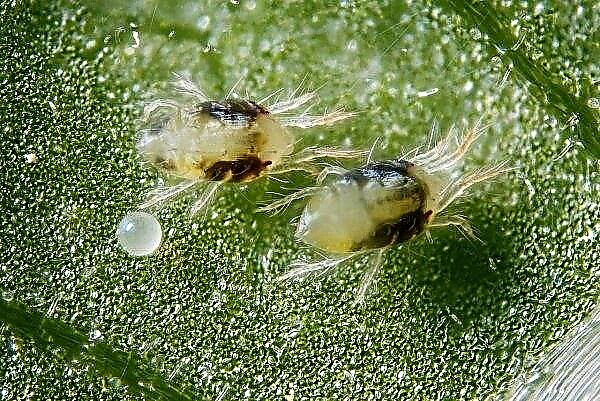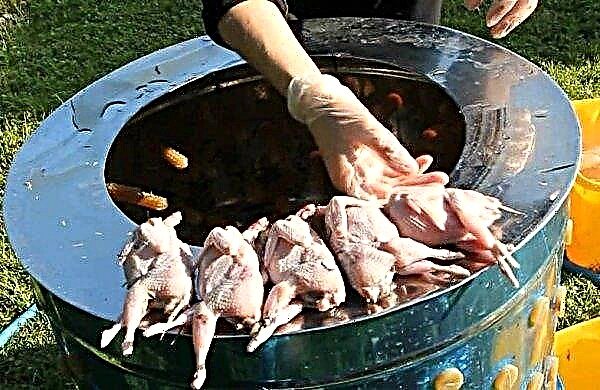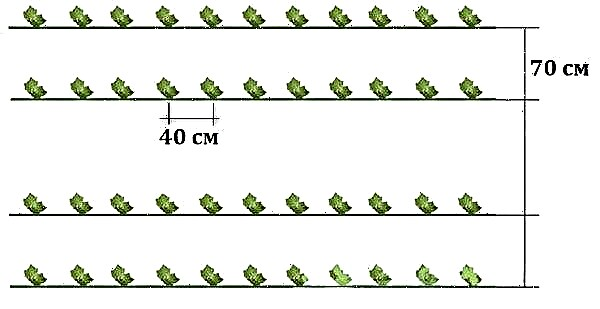Thuja Miki is often used by gardeners to form hedges or group plantings on a site. Due to its unique appearance, the tree will become a wonderful sign of distinction of your site. From the article you will learn how to properly care for thujas, where to start planting and how to protect trees from insect pests and diseases.
Botanical Description
Thuja western Miki or Thuja occidentalis Miky is a miniature evergreen shrub with a conical crown. Slowly growing, it will reach a maximum height of 0.8 m in only 10 years. It does not extend in width more than 0.5 m.
Dark green needles look original due to crowding and vertical arrangement. The classic dark green mass does not overload the plant, which retains a charming fragility, which is similar to Japanese cypress trees. A touching "pyramid" will be appropriate both in the smallest garden and in large areas, comfortably fit into alpine slides and mixed flower beds.
Increasingly, you can see Mickey in city parks and recreation areas, where the thuja lands as low decorative borders. Another quality that makes this type an invaluable material for the urban landscape is its tolerance for gases and air quality in megacities. In addition, a strict cone-shaped crown almost does not need to be formed.
Origin of name
In different sources you can find other names of Miki. She is simply called Western or Mike. To a greater extent, the name arose due to the association of the thuja with the little mouse Mickey Mouse because of its dwarf form. The birthplace of the tree is North America and Canada, and it came to Europe through the Old World.
Did you know? In some areas of Tajikistan, the Kanibadam arborvitae, which were planted about 300 years ago, are especially revered, and now they have grown to 25–30 m with a diameter of up to 10 m.
With all its diversity, there are 5 types of arborvitae and, besides the western one, to which Miki belongs, there are Chinese, Korean, folded and Japanese. Each of the species is represented by many varieties, including decorative ones. All of them came to Russia from North America and Central Asia in the 18th century, and for a long time grew only in the southern regions.
Landing
Thuja does not like shaded places, so for her landing it is necessary to choose a fairly lit place. In extreme cases, light penumbra may come up. It is better to give preference to loamy soils that are not oversaturated with moisture. If the seedling was grown by seedlings, then before sinking it must be shed with water.

In order to plant a thuja, it is necessary:
- Prepare a hole. It should be 2 times larger than the dishes in which the plant was located.
- Add sand with peat in the proportions 1: 1: 1 to the soil that was taken out of the pit and mix thoroughly. Then pour mineral fertilizers: 5g per 1 liter of soil.
- Distribute the finished mixture over the drainage.
- Plant thuja. Do not forget about the roots. They should be decomposed so that they do not intertwine.
- To water. The root system must be placed at ground level.
- Sprinkle with peat on top.
Important! The pit should be several times larger than the shipping container. Expanded clay or gravel drainage about 20 cm thick is laid at the bottom before landing.
Cuttings
The best time to plant thuja with cuttings is summer. During this period, shoot growth stops, which helps the plant take root and prepare for the next transplant.
Landing process:
- Cuttings are selected as follows. Age should be 2-3 years. And also see that the height of the plant is at least 10-15 cm and there is a powerful, developed trunk.
- We pull out the sprout with the “heel”, this will help to take root faster.
- We remove the excess needles.
- We process with a solution of a growth stimulator and drip for 12 hours.
- We transplant into a container with prepared soil (you can use sand). Lower the seedling to a depth of 1.5-2 cm. At an angle of 45 °.
- Seal, water well and do film cover.

Seeds
This is a very long process, which can take several years. First you need to freeze the seeds. To do this, place them in the fall under the thickness of snow or in the refrigerator. Keep it until spring.
Did you know? Thuja essential oil is similar in composition to absinthe. In large quantities, it can cause irreparable harm to the nervous system.
Then you should start landing, for this you need to perform several actions:
- Lay the seeds to a depth of 0.5 cm, sprinkle with sawdust.
- Cover with sunlight from above with a cloth. For these purposes, you can put together a shield from the boards.
- Carefully keep the soil moist and loose.
- As soon as the shoots appear, sprinkle with peat.
- Add mineral complexes every 2 weeks.
In the first year, seedlings will grow by 7-8 cm. For the winter period they should be covered with needles and a film. The next year, the actions are repeated. And only in the third year, sprouts that have reached 0.5 m, transplant to a permanent place.

Thuja care
Little Mickey equally withstands both short-term droughts and temporary waterlogging. He feels comfortable in partial shade, although it is fully manifested in sunny areas of moist, fertile land. Extra attention is only required for frosts that can damage the root system.
But here it is quite simple strapping and shelter with non-woven materials from too hot sunlight. In order for the tree to grow rapidly after planting, be resistant to the influence of negative environmental factors and please with a beautiful appearance, it is necessary to adhere to the rules of care.
The main ones include:
- regular watering;
- weed weeding;
- top dressing;
- pruning.
To let the plants wake up in the spring on time and evenly, they are abundantly watered and fed with complex fertilizer. Autumn top dressing should include potash elements. Saplings, without full roots, are not able to provide themselves with moisture. Therefore, the first 2-3 years of its life, the thuja needs to be mulched with organic matter and plentiful, regular (at least 1 time per week) watering.

Be sure to protect the young from the too strong sun and no doubt remove the dried or frozen parts of the crown, the branches will recover very quickly, without loss of silhouette. Adult plants do not cause much trouble, but do not tolerate transplanting. This must be taken into account when choosing a place when landing new copies. Miki is one of the few varieties that, despite a strong root system, easily take root in containers and decorative flower pots, decorating terraces, roofs and entrance groups.
Watering and feeding
After planting for 30 days, thuja must be watered every week, using 1 liter of water for every 20 cm of plant. In summer, this should be done 2 times a week, if the weather is especially hot and there is no rain. Regular sprinkling should also be carried out. It is better to do it daily. So the crown will get rid of dust, and the stomata of the arborvitae will open faster, thereby improving gas exchange. And this, in turn, guarantees an attractive appearance and rich color of foliage.

Loosening and mulching
Loosen the soil 10 cm deep around the plant. Thuja roots are located mainly on the surface, so a large depth can be dangerous for the tree. Peeling or flail is used for mulching. The layer reaches up to 7 cm.
Pruning
Trimming of dry and diseased branches is carried out annually. After this procedure, the crown becomes thicker, grows faster. Often only spring pruning is done, which is done before the buds open. They embark on it in the first year after landing.
Important! If the thuja is planted in a single landing, sanitary pruning should be carried out periodically and thin out needles. If you use a tree to create a hedge, it is important to regularly adjust the shape.
The first pruning should be done at the end of summer, when the growth activity of new shoots ends before the fall. In this case, 1/3 of the length of the branch is removed. Decorative cutting of the shoots will give the thuja a more beautiful shape. But according to many gardeners, the Miki variety perfectly retains the shape of the crown without regular formation.
Possible diseases and pests
The main types of plant diseases include:
- Phytophthora. Fungal disease, first affects the root system, and then all layers of the tree. From this, the thuja begins to fade, acquire a grayish color and lose its trunk strength.

- Brown shoot formation. The disease is formed, mainly in the early spring. First, the scales darken, then the whole branch. Then it just dies.

In addition to diseases, pests can damage the plant, in particular:
- Thuja Moth. Appears at the beginning of summer. Because of it, the tops of the shoots die off, and the scales darken.
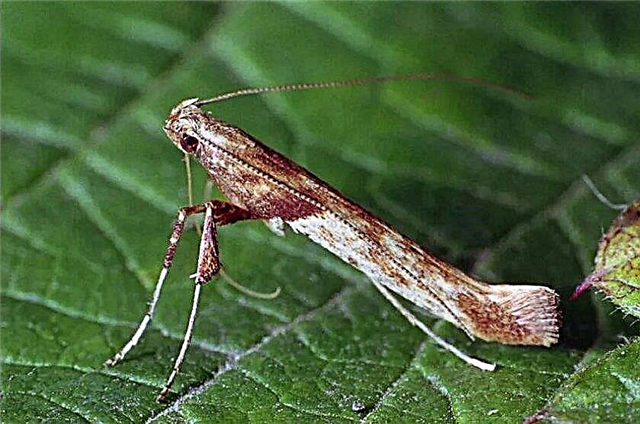
- Wireworm larvae. Appears in areas with acidic soil in places of stagnation of water.
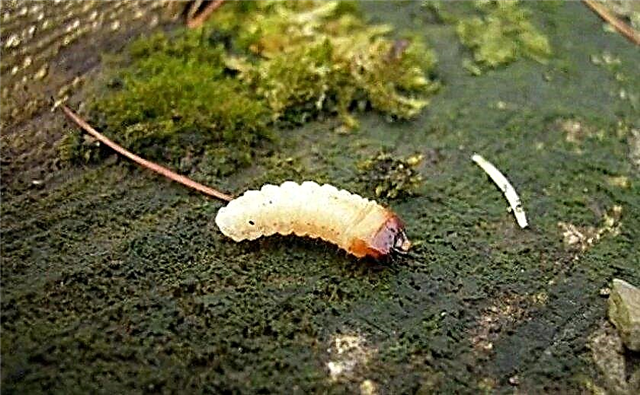
To start the destruction of pests is immediately. For this, drainage, spraying of the affected areas with bioactive substances and deoxidation of the earth are used.
Use in landscape design
Due to its interesting form, tiki Miki is willingly used in landscape design. The tree will look quite effectively and harmoniously with other plants in the mixborder, emphasizing the colorful colors of the composition. Also, thuja is planted with different colors on the lawn, where it plays the role of a bright accent. Often Miki is used in creating hedges as a kind of barrier against dust and pollution.
It is especially useful to plant this species of thuja in garden and summer cottages, near residential buildings, since volatile plants heal and purify the air. The small size of this plant allows you to plant thuja in containers and create compositions on the terrace, balcony and roof.

Tui of this type are unpretentious in leaving and will become a bright accent of your personal plot. The main thing is to correctly prune and water these trees, protect plants from diseases and pests in order to make the site a masterpiece of landscape design.





